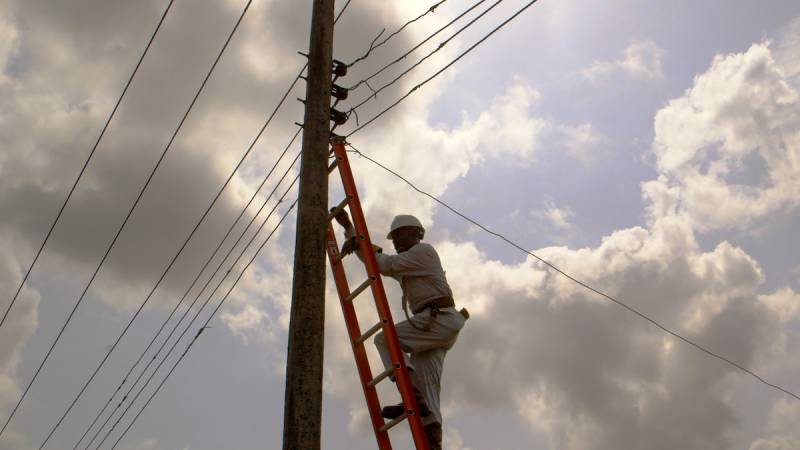The National Bureau of Statistics has stated in its electricity report for H1 2022, that the number of metered consumers for Q2 2022 was 4,958,795, compared to 4,789,799 in Q1 2022. The report also shows that estimated billing consumers for Q1 was 5,840,927, while a higher rate was recorded for Q2 at 5,849,152. Earlier it was reported that data from the Nigerian Electricity Regulatory Commission (NERC) showed the registered energy customer population stood at 12.78 million, of which only 4.77million (37.3% of the identified customers) were metered, leaving the unmetered population at 8.01million customers (62.7% of the registered customers) as of September 2021.
Metering campaigns
The Nigerian government introduced both the National Mass Metering Programme (NMMP) and the meter assets providers (MAPs) programme to increase meter distribution around the country. As of 2022, the programme has reached over a million households.
So, why is the number of estimated billed consumers higher than metered consumers?
Electricity lawyer, Ivie Ehanmo tells Nairametrics that the capital expenditure (CAPEX) requirements for metering by distribution companies (discos) is high, hence, it will take a longer time to close the metering gap, despite the ongoing government initiatives such as MAP/NMMP.
“To provide a practical illustration, 1 million meters cost about N50 billion, hence, to meter a million customers on a year-on-year basis, it would cost roughly N50 billion per year and this is for customers without meters without factoring customers with damaged or obsolete meters. The various ongoing metering initiatives can partially absolve but cannot defray the total required costs.
“Another reason is because some customers do not want to be metered, as estimated billing is cheaper for these customers, based on the cap that has been placed on estimated billing, especially large power users. The cap, therefore, incentivizes customers to remain on estimated billing, thus favouring the customers over the discos,” Ehanmo explained.
However, some power consumers have expressed eagerness to collect prepaid meters, but have been unable to. Some of the users Nairametricss approached for this article said they wanted meters so as to be aware of their monthly power consumption rates, while others believe they would pay less than what they currently pay as estimated billing consumers.
Mr. Dele Olawale, a consumer, resident in the Iyana-Iba area of Lagos state told Nairametrics over a phone call, that he has been struggling to get a prepaid meter since May 2021.
According to him, the process has been difficult for him and he is beginning to lose faith in the system because each time he tries to get one, he is told they are not available.
“It is almost as if they do not want everyone to be metered. My estimated bills are quite high and I know that if I switch to a prepaid meter, I will not spend so much powering my home. So, why are they making it difficult for people?” he asked.
“My husband and I were supposed to get a free prepaid meter way back in 2019, but the officials delayed the process until we were asked to pay for it, we paid over N50,000 before we got one,” says Madam Oby, a trader in the Garki area of Abuja.
Mr. Ohiani, another Abuja resident told Nairametrics that he is an estimated billed consumer and pays as much as N35,000 monthly for his three-bedroom apartment.
“I used to pay N7000 many years ago, but now, I pay N25,000 even though my family is out most of the day and everyone comes home at night. I wonder what we consume to pay that much,” he says.
Nationwide consumers and revenue
According to the report, electricity distribution companies (discos) nationwide, recorded a total of 10,630,726 customers for the period between January and March 2022, and showing 10,807,947 customers between April to June 2022, while showing 177,221 new electricity consumers in the first half of 2022. The report also says that nationwide electricity supply revenue from January to March 2022 was N204,735.62, showing an increase from N188,412.52 recorded between April to June 2022.
Looking at the revenue figures between the first quarter (Q1) and the second quarter (Q2), it is clear that only Benin, Jos and Yola distribution companies (discos), recorded increases in revenue in the second quarter (Q2) of the year. Other discos recorded a decrease in revenue in Q2.
Data from state distribution companies (discos) show the following;
Abuja

Benin

Eko Disco

Enugu

Ibadan Disco

Ikeja Disco

Jos Disco

Kaduna Disco

Kano

Port Harcourt

Yola

What you should know
- 82 billion has been disbursed under the National Mass Metering Programme (NMMP), for the procurement and installation of 865,956 meters across the country.
- The Meter Asset Providers (MAPs) programme was established by the Nigerian Electricity Regulatory Commission (NERC). Under the programme, third-party investors were engaged to finance, procure, supply, install and maintain electricity meters.
- In July 2022, the Central Bank of Nigeria froze 157 accounts of companies that are Meter Asset Providers (MAPs) for allegedly diverting funds meant for the procurement of prepaid meters.




